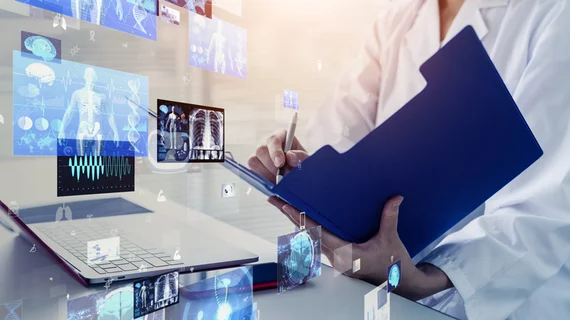Automated correlation of knee MRI, surgical findings saves radiologists’ time
Automating the correlation of knee MRI and surgical findings can save time in radiologists’ busy schedules, according to an analysis published in JACR [1].
Magnetic resonance is commonly used to pinpoint possible ligament tears in the knee joint, while arthroscopic surgery serves as the gold standard to assess the accuracy of these images. However, several factors can impact the degree of concordance between the two specialties, including the quality of the MRI and radiologists’ and orthopedic surgeons’ familiarity with one another, Cleveland Clinic experts noted.
Correlating findings between the two can help bolster the quality of diagnostic reporting. However, absent automation, this can be an “arduous and time-consuming process that requires retrospective manual review of imaging.”
The noted Ohio institution sought to alleviate this problem by using automation. Scientists are finding early success with the new workflow, and they believe their results could have “broad and far reaching” implications for the specialty.
“In this study, we have demonstrated that it is possible to create a process that can provide automated interactive radiologic-surgical correlation via a dashboard, and this process can be integrated into a large clinical practice,” Faysal Altahawi, MD, with the Cleveland Clinic Imaging Institute, and co-authors wrote June 9. “The use of this dashboard can save radiologists time while providing much more comprehensive and personalized quality review than was previously available.”
The retrospective analysis incorporated data from patients who underwent a knee MRI between 2019-2020 followed by arthroscopic surgery within the next six months. Surgeons captured arthroscopic findings via a custom-built, web-based phone app in which providers entered the results and treatment immediately following a procedure. Surgical and MRI data were correlated and analyzed using software from vendor Teradata.
The final sample included data from 3,187 patients, with automatic correlation available for about 60% of cases. Overall diagnostic accuracy of the system was 93%. Meanwhile, the number of cases that could be correlated manually by radiologists was about 84%, while concordance between the two approaches was 99% when both were available.
Altahawi et al. believe such data capture tools could allow for the development of large databases, useful for quality, research and educational initiatives.
“More specifically, the availability of these large annotated datasets could create opportunities for research regarding artificial intelligence, cost effectiveness, and population-level health services,” the authors noted. “Radiology dashboards can be useful for many types of imaging studies and can be used to correlate imaging findings with various reference standards, including surgical, pathological and clinical outcomes.”
Read much more in the Journal of the American College of Radiology at the link below.

